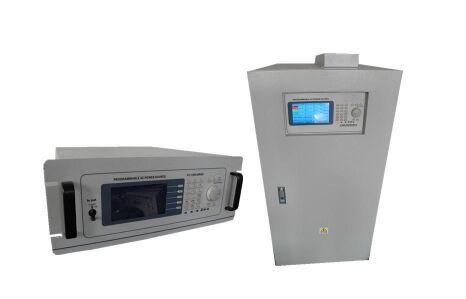When repairing the switching power supply, in order to distinguish whether the fault lies in the load circuit or the power supply itself, it is often necessary to disconnect the main load and add a dummy load to the main voltage output end of the switching power supply for testing. The reason for the dummy load is that the energy stored in the primary winding of the switching transformer must be released to the secondary side during the cut-off period of the switching tube. If the dummy load is not connected, the energy stored in the switching transformer has nowhere to be released, which can easily lead to switching Tube breakdown damage.
Regarding the dummy load, it should be selected according to the output voltage (or power) of the switching power supply. Generally speaking, if the output voltage is above 100V, a 40~100W bulb or a high-power resistor of about 300Q should be selected as a dummy load; if If the output voltage is below 30V, you can choose the bulbs used on cars/motorcycles or 600Ω~lkΩ high-power resistors as fake loads.
For some electronic products, the DC voltage output terminal of the switching power supply is grounded through a resistor, which is equivalent to connecting a dummy load. Therefore, for the switching power supply of this structure, there is no need to connect a dummy load during maintenance.
Parallel switching power supplies generally use a direct sampling and voltage stabilization control circuit with a photocoupler. When the output voltage is high, the short-circuit method can be used to distinguish the fault range.
The process of the short-circuit repair method is: first short-circuit the two pins of the photosensitive receiver tube of the photocoupler, which is equivalent to reducing the internal resistance of the photosensitive receiver tube, and the main voltage is still unchanged, indicating that the fault is after the photocoupler (switching transformer One side of the primary circuit). On the contrary, the fault is in the circuit before the photocoupler.
It should be noted that the short-circuit method should be carried out in a targeted manner on the basis of familiarity with the circuit, and cannot be blindly short-circuited to avoid expanding the fault. In addition, considering the safety of maintenance, the load circuit should be disconnected before a short circuit.
Remove the fuse (fuse) of the input circuit, and use a 60W/220V bulb string on both ends of the fuse. When the AC power is connected, if the bulb is bright, it means that the circuit is short-circuited. Because the bulb has a certain resistance, such as a 60W/220V bulb, its resistance is about 500Ω (referring to thermal resistance), so it plays a certain role in current limiting.

On the one hand, the fault of the circuit can be roughly judged by the brightness of the bulb intuitively; on the other hand, due to the current limiting effect of the bulb, it will not immediately cause the short-circuited circuit to burn out the components. Until the short circuit is eliminated, the brightness of the bulb will naturally dim. Finally, remove the bulb and replace the fuse.
Component-level substitution refers to the replacement of suspected components with normal components. If the switching power supply works normally after the replacement, it means that the replaced components are damaged. In the switching power supply, some components can be directly judged whether they are normal with a multimeter, such as resistance; some are not easy to judge, such as power control chips. Therefore, for components that are not easy to judge, if you suspect that there are problems during maintenance, it is recommended to replace them with the correct components to improve maintenance efficiency.
Board-level replacement refers to the overall replacement of a part of the switching power supply or power circuit of the whole machine. This maintenance method is mainly used for the maintenance of switching power supply when large-area components are burnt out or switching power supply has difficult faults. The characteristics of this maintenance method are thorough troubleshooting, high maintenance efficiency, but relatively high cost.